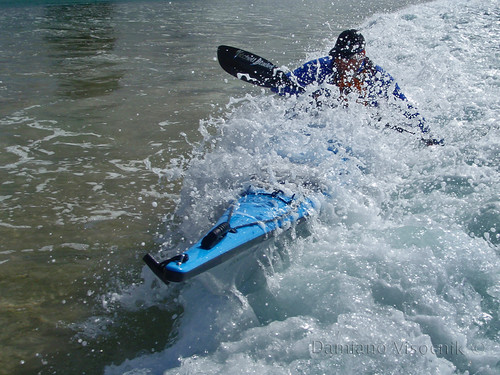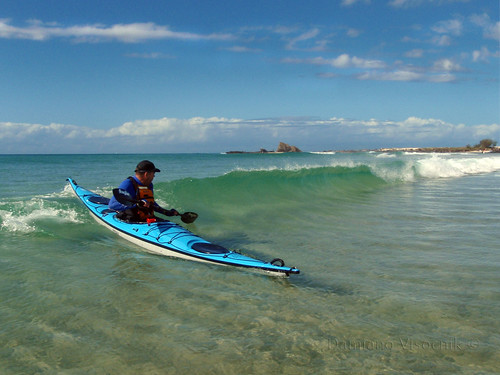Modify foot pegs? com'on...
Actually yes.
I am not interested in foot pegs that control rudders; it's the static foot pegs for skeg boats that I want to write about.
For proper efficient paddling one needs solid foot pegs.
While most novices will think that kayaking involves a lot of arm strength they eventually discover that I kayak is propelled by the torso rotation and legs.
Your feet must make decent contact with the pegs.
Too far away and a lot of your potential power is not directed to boat propulsion.
Pegs that are too flimsy and flexible also aren't much good.
Most high end kayaks have Werner (also called Yakima) foot pegs.
Those pegs are probably the best that are commercially available.
I can hear the purists say that a proper kayak should have a bulkhead as point of contact for your feet; that option is usually feasible for custom built boats.
For the rest of us that want to use adjustable foot pegs there are two solutions on improving the standard pegs.
If you are a rather tall person and your pegs will sit close to the bulkhead I think that a bar spanning across the width of the kayak to the other peg is a good option.
.jpg)
The above solution allows me to have more positions for my feet that are often jammed under the deck (size 12 US) wearing paddling shoes.
I can still adjust the reach of the bar by sliding the pegs.
An aluminum curved and profiled bar is cut to length and attached with stainless steel bolts onto the plastic pegs. Since most kayaks are tapered and the hull shape is converging, the hole on the aluminum bar will have to be slotted to allow reach adjustment.
If your pegs are however positioned somewhere half way on the rail you probably want to utilize the room left in front of your feet and the bulkhead.
Having a bar there will probably prevent positioning of items (dry bags, water etc) if space is at premium on a long trip.
A lot of expeditioners have to use all available space on a kayak to carry the necessary food, water and gear.
Therefore the Werner pegs have to be individually modified.
The surface area on a Werner peg is rather small with sharp edges.
A lot of people lament sore feet when paddling in booties with rather soft soles.
Greg Schwarz, a kayaker that can see improvement in all stock items, has modified his Avocet LV pegs.
Using foam core (expanded polystyrene) fiberglass and epoxy he has shaped a perfectly fitting modified Werner peg.
.jpg)
color matched (to deck) epoxy with slip resistant finish
.jpg)
.jpg)

.jpg)
.jpg)
.jpg)
.jpg)
.jpg)


.jpg)


